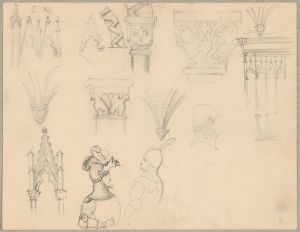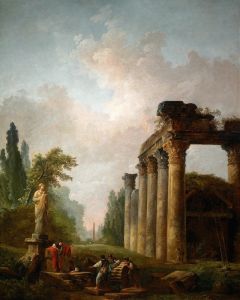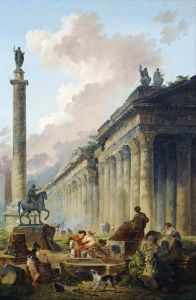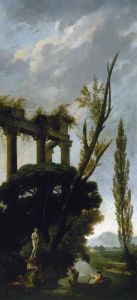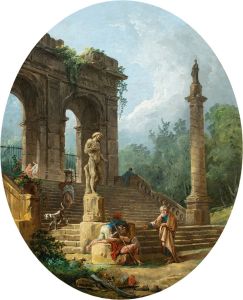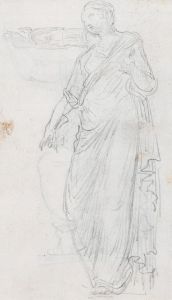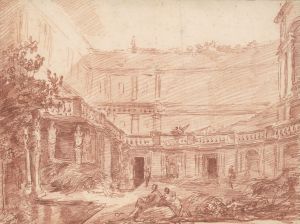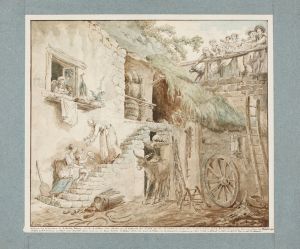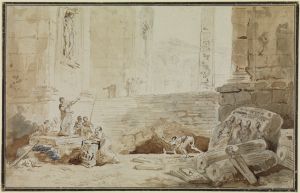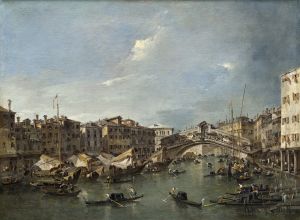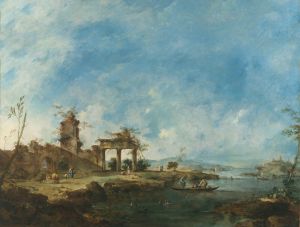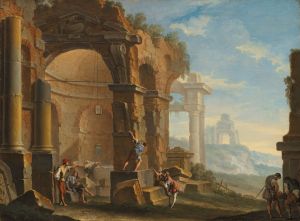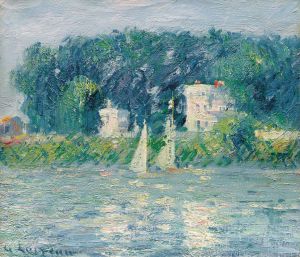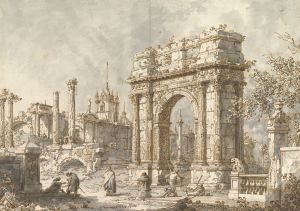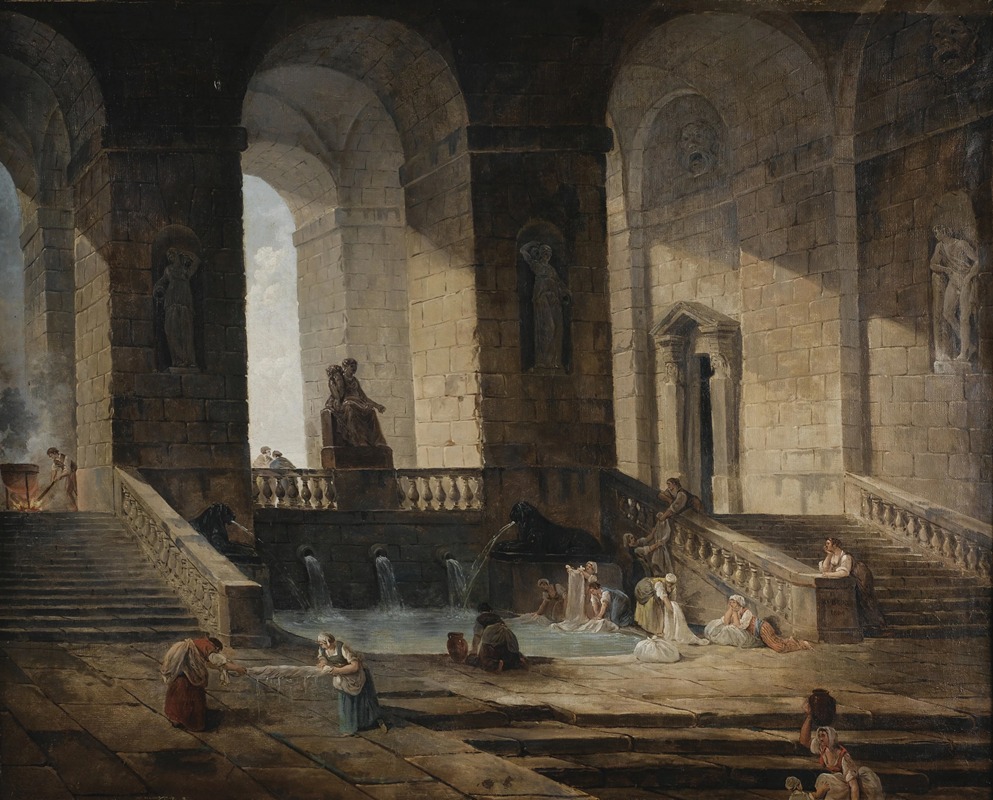
Lavandières dans une architecture romaine
A hand-painted replica of Hubert Robert’s masterpiece Lavandières dans une architecture romaine, meticulously crafted by professional artists to capture the true essence of the original. Each piece is created with museum-quality canvas and rare mineral pigments, carefully painted by experienced artists with delicate brushstrokes and rich, layered colors to perfectly recreate the texture of the original artwork. Unlike machine-printed reproductions, this hand-painted version brings the painting to life, infused with the artist’s emotions and skill in every stroke. Whether for personal collection or home decoration, it instantly elevates the artistic atmosphere of any space.
"Lavandières dans une architecture romaine" (translated as "Washerwomen in a Roman Architecture") is a painting by the French artist Hubert Robert, a prominent figure of 18th-century French art known for his depictions of ruins and architectural fantasies. The painting exemplifies Robert's characteristic blend of classical architecture and everyday life, showcasing his ability to merge historical grandeur with scenes of ordinary human activity.
The artwork portrays a group of washerwomen engaged in their daily tasks amidst an imagined Roman architectural setting. The scene is framed by monumental classical ruins, including columns, arches, and other architectural elements reminiscent of ancient Rome. These structures, while inspired by real Roman architecture, are not exact replicas of specific historical sites but rather idealized compositions that reflect Robert's fascination with antiquity and his creative interpretation of classical forms.
Hubert Robert's artistic style is marked by his training in Rome, where he studied from 1754 to 1765 as part of the French Academy in Rome. During his time in Italy, he was deeply influenced by the ruins of ancient Rome and the works of Giovanni Battista Piranesi, an Italian artist renowned for his etchings of Roman ruins. This influence is evident in "Lavandières dans une architecture romaine," where the grandeur of the architectural backdrop contrasts with the mundane activities of the washerwomen, creating a sense of timelessness and a dialogue between the past and the present.
The painting reflects the 18th-century European fascination with the classical past, a period often referred to as the Age of Enlightenment. During this time, there was a renewed interest in Greco-Roman antiquity, fueled by archaeological discoveries such as those at Pompeii and Herculaneum. Artists like Hubert Robert played a significant role in popularizing this aesthetic through their works, which often combined romanticized ruins with scenes of contemporary life.
"Lavandières dans une architecture romaine" is an example of Robert's ability to evoke a sense of nostalgia and poetic beauty. His use of light and shadow enhances the texture of the ruins and the naturalistic depiction of the figures, creating a harmonious composition that invites viewers to reflect on the passage of time and the enduring legacy of classical civilization.
The exact date of the painting's creation and its current location are not specified in available records. However, it remains a testament to Hubert Robert's skill as a painter and his contribution to the genre of architectural capriccio, where imagination and historical elements converge to create evocative and timeless works of art.





